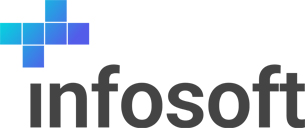Recently, The U.S Equal Opportunity Commission (EEOC) launched an initiative to ensure that artificial intelligence (AI) and other algorithmic decision-making tools used in hiring and other employment decisions should comply with federal civil rights laws that the agency enforces.
Following this, Northwestern University’s Kellogg School of Management in collaboration with Enspira, an HR consulting firm has developed a whitepaper that talks about uniting AI and human intelligence to take on hiring bias. The paper is a response to the emergence of AI as a key tool that companies are using to enhance their recruiting efforts and the recent legal scrutiny around bias in data. The whitepaper involves opinions from HR of Fortune 500 and start-up companies. The study covers topics like the rise of AI recruitment, using AI to mitigate bias, uncovering the potential for bias, the future of AI recruitment, and recommendations.
The whitepaper has a proposal of a five-step recruitment process using AI as a supplemental tool to reduce bias and improve diversity hiring:
Step one: Review the job description. Research shows that biased language patterns can impact how job seekers react to job listings, ultimately leading to decreased diversity within the workplace.
Step two: Assemble a DEIB-trained hiring team. Assembling a team that is ready to approach diversity, equity, inclusion, and belonging (DEIB) initiatives and hiring practices with an open mind is a critical component to successful talent acquisition.
Step three: Cast a wide net. In this digital age, companies can no longer use the lack of diverse applicants as a reason for their lack of diverse hiring. Employers can expand their reach through utilizing targeted ads and job boards.
Step four: Assemble diverse candidate slates. Companies can use AI talent sourcing platforms featuring games and assessments to measure potential. Through identifying soft skills, which are innate tendencies and behaviors that measure potential, AI assessments can help employers make unbiased hiring decisions.
Step five: Standardize the interview process. A standardized interview process yields consistent interview experiences for candidates, better communication within hiring teams, and reduced bias overall.
In addition to following the steps to recruitment, the whitepaper offers the following suggestions to companies who are currently using, or considering, AI-based recruitment tools.
- Understand the Technology. AI powered recruitment tools hold great potential; however, there are downsides. Employers who understand how unconscious bias can present itself within algorithmic codes will be fully equipped to embrace AI technology and utilize it to produce positive hiring outcomes.
- Focus on Diversity and Inclusion. Diverse teams have been proven to produce successful business outcomes. Employers can be intentional in their diversity and inclusion efforts through leveraging AI recruitment tools to assist in finding and hiring diverse candidates
- Be Proactive. Laws and regulations surrounding artificial intelligence are expected to be passed by 2023. Companies working proactively to establish policies and best practices in regards to AI technology will be ready for future regulations. It will be prudent to follow the laws and plan for platform audits, should they be sanctioned in the not-so-distant future.
In conclusion, the report states that the use of artificial intelligence for talent acquisition presents promise, as well as risk. Employers utilizing AI technology to source and hire talent should take the necessary steps to ensure it is being used ethically. As such, it is important that companies understand how AI tools work and be equipped to identify potential areas of bias. Through uniting artificial and human intelligence, companies can work towards creating an equitable and bias-free hiring process.




